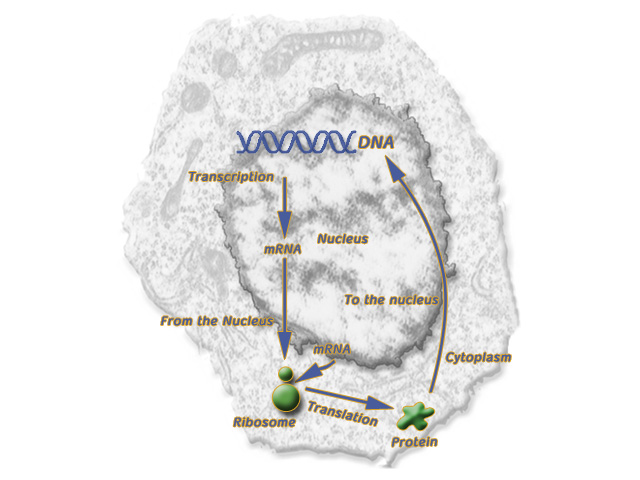A research article or an assignment?
This activity is based on a study conducted by Dr. Karen Avraham and her colleagues at the Department of Genetics and Molecular Medicine in Tel Aviv University in Israel (See Science, 1988). The article describes a study in which the POU4F3 gene, which is involved in the hearing process was identified. This was achieved by examining family members who were affected by loss of hearing at adulthood.
About loss of hearing
Clinical tests have shown that affected family members suffer early destruction of hair cells in their inner ears, which impaired the hearing process. It is important to note that the hair cells are formed during embryonic development and neither proliferate nor renew after being formed.
About the gene
gene In our activity, you successfully identified the POU4F3 gene in the human genome. Actually, you reconstructed the process of the identification of the gene that was first carried out in 1998. Following the identification of the gene, the mutation causing the onset of deafness in adulthood was identified. Whoever carries at least one copy of this mutation will probably be deaf in adulthood. To dispel any doubt concerning the mutation's effect, the sequence of alleles of the gene was checked in 114 hearing adults who were not blood relatives of the subject family. The mutation was not found in any of them. But is the assignment really accomplished? Not in scientific research, where the answer to one question elicits a new question.
The POU4F3 gene is one of 100 estimated genes that are involved in the hearing process (only some of them have been identified). The hearing process is complex. What function does the POU4F3 gene play in the orchestra?
Concerning the protein encoded by the gene…
In the POU4F3 gene, two conserved sequences forming two complexes in the protein encoded by this gene have been identified. These sequences identify it as being part of a gene family known as POU. Genes of this family have been identified in man and other organisms. They encode transcription-factor proteins involved in neuron differentiation during embryonic development. The proteins encoded by this gene family use these two domains to bind to a unique sequence in DNA that can be found in the control site of a number of genes. The binding of transcription factors to a gene control site can activate or inhibit the gene's transcription. Transcription of the POU4F3 protein probably occurs only in the middle-ear hair cells and in no other tissues in the body, as this is the only site where POU4F3 mRNA can be found. This set of data suggests that POU4F3 is a transcription factor whose normal activity is required for hair-cell differentiation during embryonic development.

Concerning the mutant protein…
You found that the deaf family members carry an 8- base-pairs deletion mutation in their POU4F3 gene. The deletion is in codon 295, which causes a reading-frame shift and a stop codon that causes earlier termination of translation than in the normal protein. Researchers believe that a shorter protein is formed from the mutant allele. As a result, the protein lacks one of the two complexes required for its normal activity: the two complexes are required for correct binding of the transcription-factor protein to the unique DNA sequence. The absence of one of them may therefore reduce the affinity of the transcription-factor protein to the unique DNA sequence.
A flood of questions follows, such as:
Does the transcription factor activate or inhibit other genes? What genes does it affect?
What effect does the mutant allele have?
Why does a defect in a gene that takes part in embryonic hair- cell differentiation cause hair cell destruction specifically in adulthood?
Why is the mutation dominant?
These questions remain unanswered, but they will certainly be studied in the future. Identification of the molecular processes causing deafness can serve as a basis for finding new ways of helping the deaf population. Identification of one of the dozens of genes involved in hearing is a significant step in solving the puzzle of the hearing process in particular, and knowledge of human genes.

